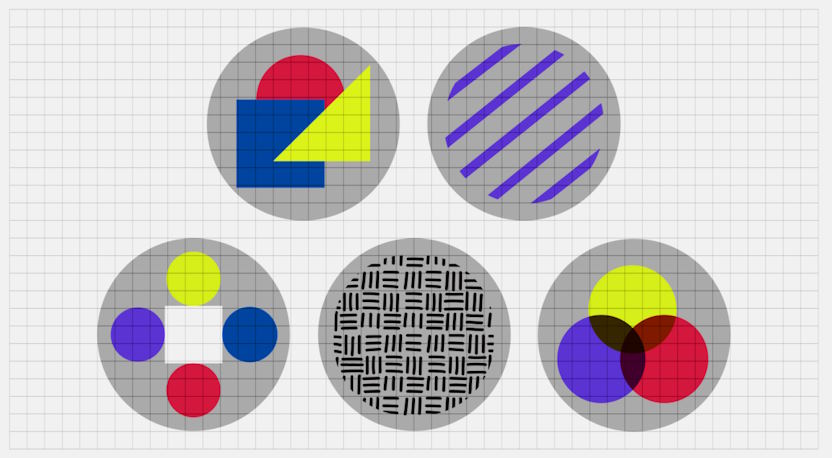Design, in all its forms, serves as a potent language that communicates, influences, and resonates with individuals on a profound level. At the heart of this communicative prowess lies the concept of symmetry, an intrinsic element that weaves a thread of harmony throughout various disciplines. From the intricate patterns adorning historical monuments to the sleek, balanced layouts of modern graphic design, symmetry plays a pivotal role in creating visual equilibrium.
Understanding Symmetry in Design
Symmetry, a fundamental design principle, manifests in various captivating forms, each contributing to the overall harmony of a composition. The first facet to explore is the different types of symmetry that designers leverage to create visually engaging works.
- Reflection Symmetry: This is perhaps the most intuitive form, where a design mirrors itself along a central axis. Think of a butterfly’s wings or a classic Rorschach inkblot – both are quintessential examples of reflection symmetry.
- Rotational Symmetry: Here, a design rotates around a central point, creating repeated patterns. Mandalas and kaleidoscopic motifs are excellent illustrations of rotational symmetry, captivating viewers with their dynamic, circular arrangements.
- Translational Symmetry: In translational symmetry, a design shifts or slides without rotation. This is often observed in tessellations, where shapes seamlessly fit together in a repeated pattern across a surface.
Moving beyond the technical aspects, the historical significance of symmetry in art and design is profound. From the intricacies of ancient Greek architecture to the meticulous designs of Islamic art, symmetry has been a hallmark of aesthetic achievement across diverse cultures and time periods.
Symmetry in Various Design Disciplines
Architecture
- Symmetry in Building Structures: Architects have long recognized the power of symmetry in creating structures that exude balance and stability. From the iconic facades of neoclassical buildings to the precision of Gothic cathedrals, symmetry in building design extends beyond aesthetics, influencing the very functionality and durability of structures.
- Historical Architectural Examples: Timeless architectural marvels bear testament to the enduring allure of symmetry. The Parthenon in Athens stands as a classic example, where perfectly mirrored columns and a centrally placed entrance create a sense of grandeur. Similarly, the Taj Mahal’s symmetrical layout contributes to its breathtaking beauty.
Graphic Design
- Symmetry in Layout and Composition: Graphic designers harness symmetry to craft visually pleasing layouts. Whether through balanced grids in editorial design or symmetrically aligned elements in web design, this principle guides the viewer’s eye seamlessly through the visual narrative.
- The Role of Symmetry in Branding: Symmetry plays a crucial role in shaping brand identities. Logos like Apple’s iconic apple or Adidas’ three stripes often employ symmetry to convey a sense of reliability and order, fostering instant recognition and brand loyalty.
Fashion Design
- Symmetry in Garment Design: Fashion designers utilize symmetry to create garments that flatter the human form. Balanced silhouettes, symmetrical patterns, and mirrored detailing contribute to the overall visual harmony of the attire.
- Notable Examples from the Fashion Industry: Design houses like Chanel and Valentino frequently integrate symmetrical elements into their collections, showcasing the enduring appeal of balance in fashion. Whether through perfectly mirrored patterns or symmetrically tailored garments, these designers exemplify the seamless integration of symmetry into the world of haute couture.
Achieving Design Harmony through Symmetry
Balancing Asymmetry and Symmetry
Design harmony is a delicate dance between asymmetry and symmetry. While symmetry provides a sense of order and equilibrium, asymmetry introduces dynamism and intrigue. The art lies in striking the right balance, where the precision of symmetrical elements harmonizes seamlessly with the creative tension introduced by asymmetry. Designers navigate this interplay to craft compositions that are visually engaging and emotionally resonant.
The Role of Asymmetry in Breaking Monotony
Asymmetry serves as a powerful tool for breaking the monotony that strict symmetry can sometimes impose. It introduces a touch of unpredictability, drawing the viewer’s eye to unexpected focal points. In design, monotony can be the enemy of engagement, and asymmetry becomes the ally in infusing vitality and interest. The intentional disruption of symmetry creates a narrative flow, inviting viewers to explore and appreciate the nuanced details within the composition.


